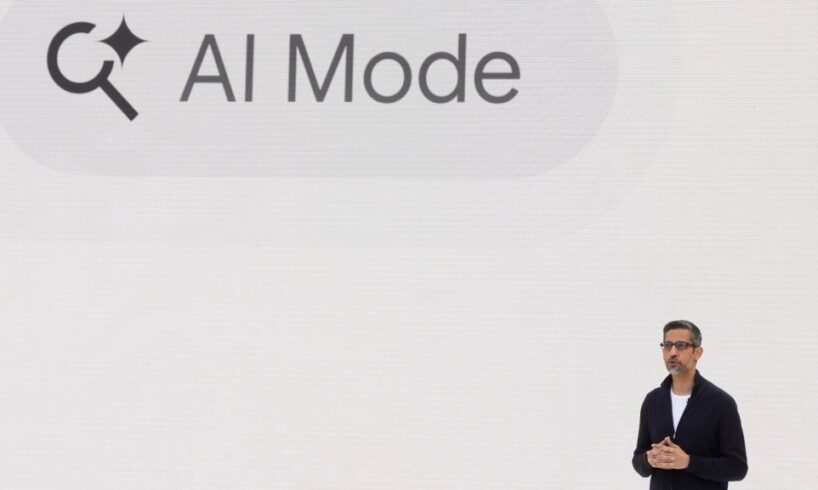
Google has begun rolling out its AI Mode in Australia, a new setting in Search that generates detailed, conversational answers to queries.
Related Article Block Placeholder
Article ID: 323808
The feature was first introduced as an experiment in the United States earlier this year and is now expanding to more than 40 countries, including Australia.
The rollout marks Google’s latest step towards integrating generative AI into Search and comes as new data suggests its earlier AI Overviews feature has already changed how users interact with news and information online.
What is Google AI mode and how does it work?
Google’s AI Mode is an optional feature that allows users to ask multi-layered or open-ended questions and receive AI-generated summaries that combine text, tables, and links to relevant web content.
It runs on a customised version of the tech giant’s Gemini models and supports long-form prompts, follow-up questions, and multimodal inputs such as voice or images.
Smarter business news. Straight to your inbox.
For startup founders, small businesses and leaders. Build sharper instincts and better strategy by learning from Australia’s smartest business minds. Sign up for free.
By continuing, you agree to our Terms & Conditions and Privacy Policy.
“AI Mode lets you ask longer, more complex questions that would have previously required multiple searches,” Hema Budaraju, Google’s vice president of Search product management, said.
“Early testers are already asking queries nearly three times the length of traditional searches, showing it’s perfect for your toughest questions.”
Google says the feature is designed for exploratory or planning-based tasks, such as trip itineraries or comparative research.
In one example, a user photographs a Korean restaurant menu and asks which dishes are vegetarian. The idea was to demonstrate how AI Mode combines Google Lens with Gemini’s reasoning capabilities.
Related Article Block Placeholder
Article ID: 310830
Behind the scenes, AI Mode uses what Budaraju described as a “query fan-out technique,” breaking complex prompts into subtopics and issuing multiple searches on the user’s behalf.
“This enables Search to dive deeper into the web than ever before, helping you find incredible, hyper-relevant content,” she said.
Google has repeatedly stressed that AI Mode “helps people discover content from across the web” and includes “prominent links for people to click on”.
The company said it “aims to show an AI-powered response as much as possible,” but when confidence is lower, users will still see traditional web results.
AI Mode is now rolling out in Australia in English and is expected to reach more users both on desktop and mobile as Google continues its global expansion in the months ahead
Google faces growing competition from OpenAI and Perplexity in the AI search race
AI Mode marks a further shift in how Google handles information retrieval, moving from a traditional search index to what many analysts now call an “answer engine”. But Google is no longer alone in that race.
OpenAI and Perplexity have both launched AI-powered browsers in recent months that deliver conversational, task-oriented results directly within their platforms. These are firmly challenging Google’s decades-long dominance over how people discover information online.
Related Article Block Placeholder
Article ID: 322663
That rivalry has intensified in recent weeks following an onslaught of OpenAI product rollouts.
At its DevDay event this week, the company unveiled Apps in ChatGPT, allowing users to access third-party tools like Canva and Spotify directly within the chatbot.
This follows ChatGPT Pulse, a personalised news and productivity feed, and Instant Checkout, which enables shopping within the app via Shopify, Etsy and Stripe integrations.
Together, these features push ChatGPT closer to an all-in-one assistant, arguably becoming the Google Ads of AI-powered commerce.
Perplexity, meanwhile, continues to expand its Comet browser and retail-focused tools such as Shop Like a Pro, which integrate shoppable answer cards and merchant analytics for AI-optimised visibility.
Perplexity has taken a different tack to monetisation, with vice president Ryan Foutty telling SmartCompany it’s “a consumer product company” focused on subscriptions, not ads.
The company is also testing clearly labelled sponsored follow-up prompts with partners.
The startup also recently made a bid (estimated at around US$34.5 billion) for Google Chrome, just before a US court ruled that Google will not be required to sell off Chrome or Android as part of ongoing antitrust probes.
Both companies are also targeting accessibility and affordability as they scale.
Related Article Block Placeholder
Article ID: 319698
OpenAI’s ChatGPT Go tier, now live in India and Indonesia, offers a low-cost subscription with GPT-5 access and local payment options, while Perplexity has bundled subscriptions with Optus mobile plans in Australia.
These developments point to a rapidly escalating contest over user attention, data and discoverability. Each platform is working to keep users within its own ecosystem for search, creation and transactions.
Industry impact and publisher concerns
AI Mode’s rollout follows a year of growing tension between Google and publishers over how AI-generated answers affect web traffic.
Analysis by the ABC using SimilarWeb data shows several of Australia’s largest news websites have experienced year-on-year declines in organic search traffic since AI Overviews began appearing above traditional results in 2024, with some outlets down by as much as 35%.
The trend mirrors patterns seen in the US and UK, where publishers have reported similar drops in search-driven readership since Google began surfacing AI summaries.
Google maintains that total click volumes from Search have remained “relatively stable” and says the quality of those clicks, measured by the time users spend on visited sites, has improved.
The shift has also raised questions about small business visibility. As SmartCompany has previously reported, AI-driven search features increasingly filter, summarise and rank information before users see a list of results.
This is a change experts warn could make it harder for smaller operators to appear in organic search or reach new customers through unpaid discovery.





